#Raphael Moneo
Explore tagged Tumblr posts
Text

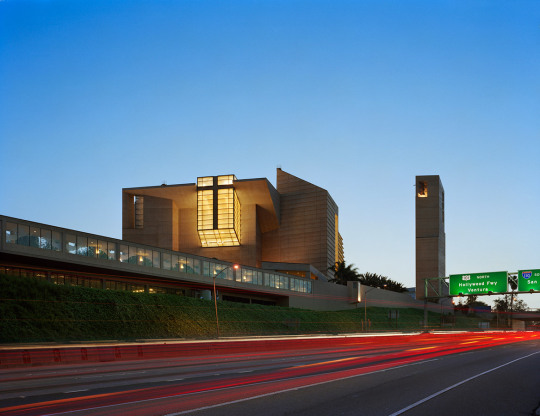
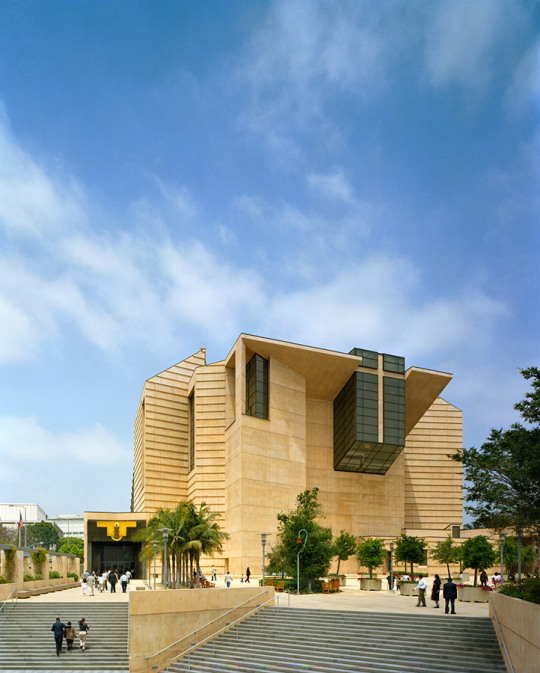

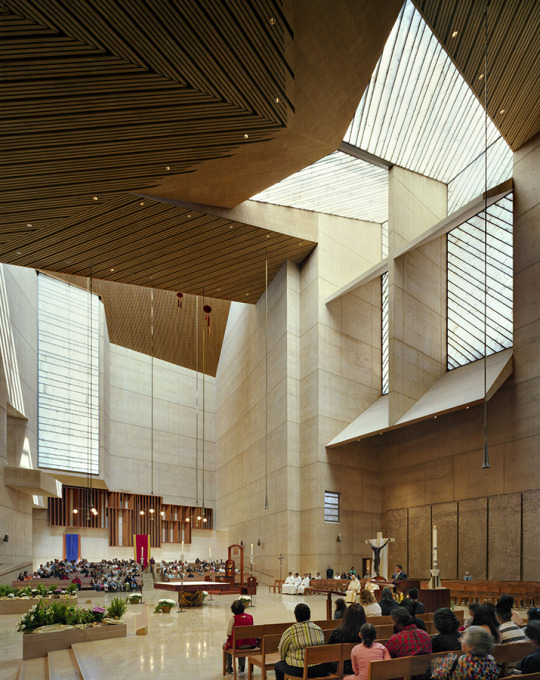

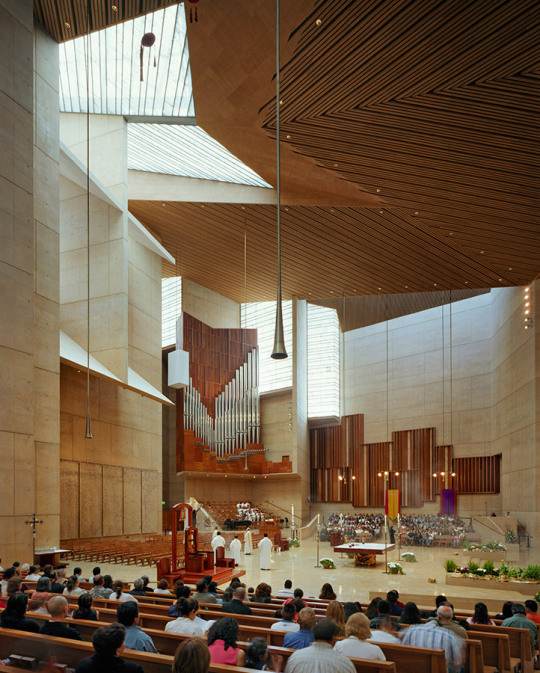
Cathedral of our Lady of the Angels, Los Angeles - Raphael Moneo
#Raphael Moneo#architecture#design#building#modern architecture#interiors#concrete#geometric#cathedral#religious architecture#beautiful spaces#cool design#los angeles#america#spanish architecture#timber#stone#stained glass#angles#beautiful buildings
48 notes
·
View notes
Text








A few weeks ago we posted that the noted Japanese architect Fumihiko Maki had died. He was a master of understatement: “One of the greatest, not flamboyant or dominating, flexible and attentive to program, lightly post-modern, always with beautiful results.” In retrospect, we can group him with a number of other architects whose careers peaked in the 80s and 90s of the 20th Century, and who adapted modern architecture to the then prevalent Post Modernism without ever capitulating. Their buildings were emphatically modern, yet skillfully adapted both to the historical city on one hand, and the natural environment on the other. It was a humble architecture that respected the existing man-made and natural context, and far more compelling in its physical presence than the paper thin, attention grabbing work of today’s starchitects. An architecture for all time.
I am thinking of four architects in particular: Maki from Japan (though educated in the US with plenty of work here), Romaldo Giurgola, a Roman architect who taught at Penn and Columbia, and founded his firm in Philadelphia, Raphael Moneo, a Spaniard, who taught at Harvard, again with plenty of work in the US, and Vittorio Gregotti, an Italian from Milan, whose work is concentrated in the nation of his birth.
Pictured are the following: 1. Giurgola, the Parliament House of Australia, Canberra, 2 Giurgola, the MIT Health Services Building, Cambridge, 3. Maki, the Annenberg Center at U. Penn, Philadelphia, 4. Maki, the Spiral Building, Tokyo, 5. Gregotti, the church of Saint Massimiliano Kobe in Bergamo, 6. Gregotti, the Bicocca complex for Pirelli in Milan, 7. Moneo, the Miro Foundation in Palma di Mallorca, and 8, Moneo, The National Museum of Roman Art in Merida.
1 note
·
View note
Text








A few weeks ago we posted that the noted Japanese architect Fumihiko Maki had died. He was a master of understatement: “One of the greatest, not flamboyant or dominating, flexible and attentive to program, lightly post-modern, always with beautiful results.” In retrospect, we can group him with a number of other architects whose careers peaked in the 80s and 90s of the 20th Century, and who adapted modern architecture to the then prevalent Post Modernism without ever capitulating. Their buildings were emphatically modern, yet skillfully adapted both to the historical city on one hand, and the natural environment on the other. It was a humble architecture that respected the existing man-made and natural context, and far more compelling in its physical presence than the paper thin, attention grabbing work of today’s starchitects. An architecture for all time.
I am thinking of four architects in particular: Maki from Japan (though educated in the US with plenty of work here), Romaldo Giurgola, a Roman architect who taught at Penn and Columbia, and founded his firm in Philadelphia, Raphael Moneo, a Spaniard, who taught at Harvard, again with plenty of work in the US, and Vittorio Gregotti, an Italian from Milan, whose work is concentrated in the nation of his birth.
Pictured are the following: 1. Giurgola, the Parliament House of Australia, Canberra, 2 Giurgola, the MIT Health Services Building, Cambridge, 3. Maki, the Annenberg Center at U. Penn, Philadelphia, 4. Maki, the Spiral Building, Tokyo, 5. Gregotti, the church of Saint Massimiliano Kobe in Bergamo, 6. Gregotti, the Bicocca complex for Pirelli in Milan, 7. Moneo, the Miro Foundation in Palma di Mallorca, and 8, Moneo, The National Museum of Roman Art in Merida.
1 note
·
View note
Text

Northeast Corner Building - Raphael Moneo
105 notes
·
View notes
Text
Dos Estilos: Frank Gehry y Raphael Moneo
Cada arquitecto tiene su propio estilo y es muy importante entenderlo, el estilo de Mies van der Rohe es muy simple mientras que el estilo de Antoni Gaudí es muy complejo, la diferencia es enorme. Al igual que Mies y Gaudí, Frank Gehry y Raphael Moneo tienen algunas diferencias importantes, pero esto no es óbice para el éxito de su obra. Son grandes héroes de la arquitectura y su búsqueda de la buena arquitectura es muy evidente. Frank Gehry es ese tipo raro de arquitecto que ha cosechado tanto elogios de la crítica como fama popular. Desde Frank Lloyd Wright, un arquitecto no ha sido un nombre tan familiar.
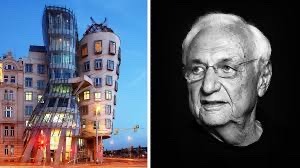
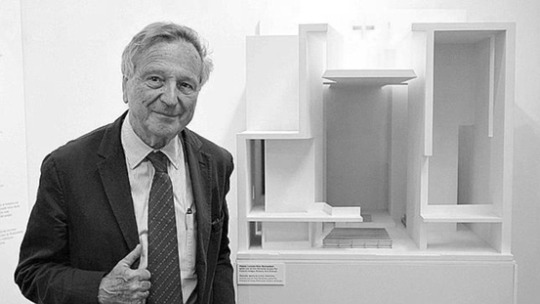
Los diseños de Gehry desdibujan dramáticamente la línea entre el arte y la arquitectura, sin embargo, el fuerte atractivo de sus diseños escultóricos no oscurece el papel de la función. Sigue un minucioso proceso de sutil visión y revisión tanto en sus bocetos como en su taller de maquetas. Es un error común pensar que los edificios de Gehry están construidos como meros contenedores, construidos por el bien de su forma. En verdad, los edificios están construidos de adentro hacia afuera. Los estudios de masas de bloques de madera se construyen y reconstruyen de acuerdo con los propios bocetos en evolución de Gehry. Los modelos gestuales de cartón, madera y tela actúan como intermediarios, manteniendo a Gehry consciente de las implicaciones tridimensionales. El proceso, como admite Gehry en la película, le obliga a “trabajar en dos o tres escalas a la vez”. Esto le obliga a olvidarse de la maqueta como “objeto de deseo” y concentrarse en cambio en el funcionamiento del edificio.
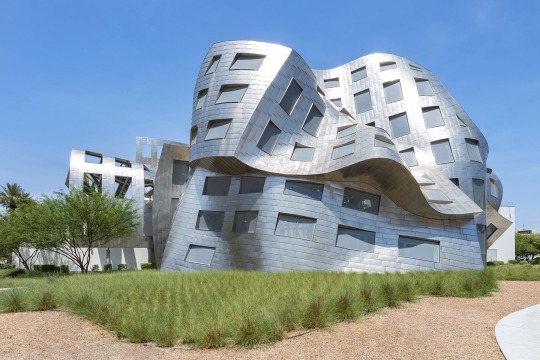
Los edificios de Gehry son muy ocupados, aleatorios, dinámicos, no tan ordenados y meticulosos como los de Moneo. Gehry es un diseñador que comienza su trabajo con dibujos de los que deriva su obra. Esto contrasta con Moneo, quien creía que los dibujos eran inútiles para completar las obras, ya que los edificios no se podían dibujar. Gehry se caracteriza por jugar con sustancias orgánicas en sus obras, mientras que Moneo es completamente diferente. Moneo estaba interesado en el orden más que en la experiencia tridimensional del espacio. Aunque sus estilos son muy diferentes, sus edificios son todos muy singulares a los ojos del mundo, que se dejan llevar por construcciones antiguas. No hay duda de que las diferencias entre Mies y Gaudí son extremas, y hay poca o ninguna similitud entre sus obras, el Guggenheim y el Cousard. Estos edificios se han convertido en una parte importante del terreno en el que se ubican.
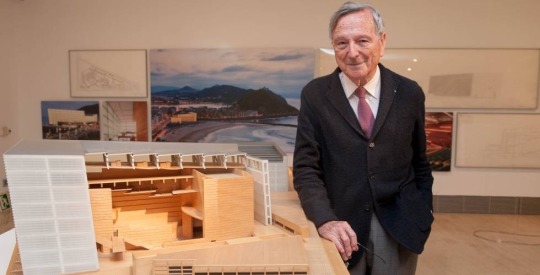
Es sorprendente cómo dos arquitectos muy diferentes y únicos tienen algunas similitudes en sus obras. Como dije antes, la diferencia entre Moneo y Gehry es enorme. Lo que buscaban, lo que defendían y la forma en que se realizaba su trabajo diferían, pero puede haber algunas similitudes en la arquitectura entre los dos. En la vida de los arquitectos, siempre se nos dice que nunca hay una solución correcta, hay muchas. Entonces, el proceso puede ser diferente, pero no hay nada de malo en eso, porque se puede ver en su arquitectura que estas arquitecturas han tenido mucho éxito.
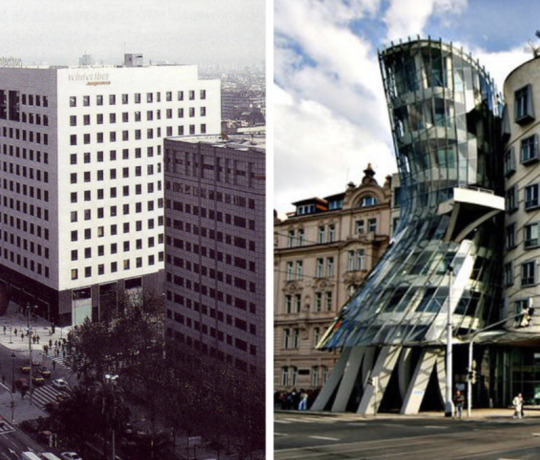
2 notes
·
View notes
Text
New Post has been published on Lutars Turizm
New Post has been published on https://www.lutarsturizm.com/thyssen-bornemisza-muzesi-biletleri.html
Thyssen-Bornemisza Müzesi Biletleri
Thyssen-Bornemisza Müzesi’nin kalıcı ve geçici sergilerine erişimin keyfini çıkarın.
Thyssen-Bornemisza Müzesi Biletleri
Öne çıkanlar
13. yüzyıldan 20. yüzyılın sonlarına kadar uzanan dönemden sanat eserlerini keşfedin
Diğer Avrupa müzelerinde mevcut olmayan 19. yüzyıl Amerikan resim koleksiyonunu görün
Tam açıklama
Thyssen-Bornemisza Müzesi, ziyaretçilerine 13. yüzyıldan 20. yüzyılın sonlarına kadar uzanan sanat tarihi hakkında benzersiz bir keşif olanağı sunuyor. Ziyaretçileri büyüleyen sanat eserleri arasında, Dürer, Raphael, Titian, Rubens, Rembrandt, Caravaggio, Manet, Renoir, Cézanne, Van Gogh, Gauguin, Kandinsky, Picasso, Hopper ve Rothko gibi büyük ustaların başyapıtları yer alıyor. Başlıca sanat hareketleri, bu nefes kesen niteliğe sahip eserler aracılığıyla bir kitabın çevrilen sayfaları gibi temsil ediliyor.
Ziyaretçiler, yaklaşık 1.000 eserlik koleksiyonun arasında dolaşırken Rönesans döneminde biraz duraklayabilir, Barok döneminde oyalanabilir, Ekspresyonizmi keşfedebilir ya da 20. yüzyıl avangart hareketlerinin dünyasına girebilirler. Palacio de Villahermosa galerilerinde, Batı sanatının tarihi gözlerinizin önüne serilir. Bu galeriler, Rafael Moneo tarafından Thyssen-Bornemisza koleksiyonuna ev sahipliği yapması için tekrar modellenmiştir.
Başlangıçta özel iken şimdi tüm İspanyol ulusuna ait olan bu uluslararası koleksiyon bize iki esas yaratıcısının olağanüstü zevklerini tanıttı: Baron Heinrich Thyssen-Bornemisza (1875-1947) ve oğlu Hans Heinrich Thyssen-Bornemisza (1921-2002). Görkemli sanat eserlerinin bulunduğu İspanyol kraliyet koleksiyonlarının aksine, bu özel koleksiyona yapılan ziyaret keyifli ve samimi bir deneyim sunuyor.
2004 yılında koleksiyon Carmen Thyssen-Bornemisza koleksiyonuna katılarak, müze bünyesinde Kalıcı Koleksiyon olarak sergilenen, tarz ve tür olarak 200’den fazla eseri barındıran koleksiyonu oluşturdu.
Erişilebilir, dinamik, çığır açan ve en yüksek standartlarda ziyaretçi hizmeti veren Thyssen-Bornemisza Müzesi, tüm halk kesimlerine, özellikle genç bireylere odaklanmaktadır. Geçici sergiler, konserler, canlı müzik dinletileri, atölye çalışmaları, film ve tiyatro gösterileri ile birlikte ziyaretçilere yönelik geniş yelpazede seçenekler sunar.
Neler dahil?
Thyssen-Bornemisza Müzesi’ne giriş
0 notes
Text
Baryshnikov, N'Dour, Nishat, Anatsui, Moneo Win 2017 Praemium Imperiale
Dancer Mikhail Baryshnikov, Senegalese musician Youssou N'Dour, sculptor El Anatsui, artist Shirin Neshat, and architect Raphael Moneo are this year's recipients of this year's ¥15 million ($137,000) award, given by the Japan Art Association to honor achievement in fields not covered by the Nobel Prizes.
Article source here:Arts Journal
0 notes
Photo







Museum of Roman Art, Merida, Spain - Raphael Moneo
https://rafaelmoneo.com/en/home/
#Raphael Moneo#architecture#building#design#photography#architectural photography#museum#culture#history#historical#art#roman#classical#classical architecture#archaeology#old and new#arches#brick#vaults#stone#solid#interiors#amazing places#beautiful architecture#beautiful buildings#architect#spain#merida#spanish architecture#spanish art
241 notes
·
View notes
Photo

Raphael Moneo - National Museum of Roman Art
1K notes
·
View notes
Photo

Raphael Moneo - National Museum of Roman Art, Mérida 1986 (click for detail). Via Lluis Casals.
360 notes
·
View notes
Text
New Post has been published on Lutars Turizm
New Post has been published on https://www.lutarsturizm.com/thyssen-bornemisza-muzesi-biletleri.html
Thyssen-Bornemisza Müzesi Biletleri
Thyssen-Bornemisza Müzesi’nin kalıcı ve geçici sergilerine erişimin keyfini çıkarın.
Thyssen-Bornemisza Müzesi Biletleri
Öne çıkanlar
13. yüzyıldan 20. yüzyılın sonlarına kadar uzanan dönemden sanat eserlerini keşfedin
Diğer Avrupa müzelerinde mevcut olmayan 19. yüzyıl Amerikan resim koleksiyonunu görün
Tam açıklama
Thyssen-Bornemisza Müzesi, ziyaretçilerine 13. yüzyıldan 20. yüzyılın sonlarına kadar uzanan sanat tarihi hakkında benzersiz bir keşif olanağı sunuyor. Ziyaretçileri büyüleyen sanat eserleri arasında, Dürer, Raphael, Titian, Rubens, Rembrandt, Caravaggio, Manet, Renoir, Cézanne, Van Gogh, Gauguin, Kandinsky, Picasso, Hopper ve Rothko gibi büyük ustaların başyapıtları yer alıyor. Başlıca sanat hareketleri, bu nefes kesen niteliğe sahip eserler aracılığıyla bir kitabın çevrilen sayfaları gibi temsil ediliyor.
Ziyaretçiler, yaklaşık 1.000 eserlik koleksiyonun arasında dolaşırken Rönesans döneminde biraz duraklayabilir, Barok döneminde oyalanabilir, Ekspresyonizmi keşfedebilir ya da 20. yüzyıl avangart hareketlerinin dünyasına girebilirler. Palacio de Villahermosa galerilerinde, Batı sanatının tarihi gözlerinizin önüne serilir. Bu galeriler, Rafael Moneo tarafından Thyssen-Bornemisza koleksiyonuna ev sahipliği yapması için tekrar modellenmiştir.
Başlangıçta özel iken şimdi tüm İspanyol ulusuna ait olan bu uluslararası koleksiyon bize iki esas yaratıcısının olağanüstü zevklerini tanıttı: Baron Heinrich Thyssen-Bornemisza (1875-1947) ve oğlu Hans Heinrich Thyssen-Bornemisza (1921-2002). Görkemli sanat eserlerinin bulunduğu İspanyol kraliyet koleksiyonlarının aksine, bu özel koleksiyona yapılan ziyaret keyifli ve samimi bir deneyim sunuyor.
2004 yılında koleksiyon Carmen Thyssen-Bornemisza koleksiyonuna katılarak, müze bünyesinde Kalıcı Koleksiyon olarak sergilenen, tarz ve tür olarak 200’den fazla eseri barındıran koleksiyonu oluşturdu.
Erişilebilir, dinamik, çığır açan ve en yüksek standartlarda ziyaretçi hizmeti veren Thyssen-Bornemisza Müzesi, tüm halk kesimlerine, özellikle genç bireylere odaklanmaktadır. Geçici sergiler, konserler, canlı müzik dinletileri, atölye çalışmaları, film ve tiyatro gösterileri ile birlikte ziyaretçilere yönelik geniş yelpazede seçenekler sunar.
Neler dahil?
Thyssen-Bornemisza Müzesi’ne giriş
0 notes
Text
New Post has been published on Lutars Turizm
New Post has been published on https://www.lutarsturizm.com/thyssen-bornemisza-muzesi-biletleri.html
Thyssen-Bornemisza Müzesi Biletleri
Thyssen-Bornemisza Müzesi’nin kalıcı ve geçici sergilerine erişimin keyfini çıkarın.
Thyssen-Bornemisza Müzesi Biletleri
Öne çıkanlar
13. yüzyıldan 20. yüzyılın sonlarına kadar uzanan dönemden sanat eserlerini keşfedin
Diğer Avrupa müzelerinde mevcut olmayan 19. yüzyıl Amerikan resim koleksiyonunu görün
Tam açıklama
Thyssen-Bornemisza Müzesi, ziyaretçilerine 13. yüzyıldan 20. yüzyılın sonlarına kadar uzanan sanat tarihi hakkında benzersiz bir keşif olanağı sunuyor. Ziyaretçileri büyüleyen sanat eserleri arasında, Dürer, Raphael, Titian, Rubens, Rembrandt, Caravaggio, Manet, Renoir, Cézanne, Van Gogh, Gauguin, Kandinsky, Picasso, Hopper ve Rothko gibi büyük ustaların başyapıtları yer alıyor. Başlıca sanat hareketleri, bu nefes kesen niteliğe sahip eserler aracılığıyla bir kitabın çevrilen sayfaları gibi temsil ediliyor.
Ziyaretçiler, yaklaşık 1.000 eserlik koleksiyonun arasında dolaşırken Rönesans döneminde biraz duraklayabilir, Barok döneminde oyalanabilir, Ekspresyonizmi keşfedebilir ya da 20. yüzyıl avangart hareketlerinin dünyasına girebilirler. Palacio de Villahermosa galerilerinde, Batı sanatının tarihi gözlerinizin önüne serilir. Bu galeriler, Rafael Moneo tarafından Thyssen-Bornemisza koleksiyonuna ev sahipliği yapması için tekrar modellenmiştir.
Başlangıçta özel iken şimdi tüm İspanyol ulusuna ait olan bu uluslararası koleksiyon bize iki esas yaratıcısının olağanüstü zevklerini tanıttı: Baron Heinrich Thyssen-Bornemisza (1875-1947) ve oğlu Hans Heinrich Thyssen-Bornemisza (1921-2002). Görkemli sanat eserlerinin bulunduğu İspanyol kraliyet koleksiyonlarının aksine, bu özel koleksiyona yapılan ziyaret keyifli ve samimi bir deneyim sunuyor.
2004 yılında koleksiyon Carmen Thyssen-Bornemisza koleksiyonuna katılarak, müze bünyesinde Kalıcı Koleksiyon olarak sergilenen, tarz ve tür olarak 200’den fazla eseri barındıran koleksiyonu oluşturdu.
Erişilebilir, dinamik, çığır açan ve en yüksek standartlarda ziyaretçi hizmeti veren Thyssen-Bornemisza Müzesi, tüm halk kesimlerine, özellikle genç bireylere odaklanmaktadır. Geçici sergiler, konserler, canlı müzik dinletileri, atölye çalışmaları, film ve tiyatro gösterileri ile birlikte ziyaretçilere yönelik geniş yelpazede seçenekler sunar.
Neler dahil?
Thyssen-Bornemisza Müzesi’ne giriş
0 notes
